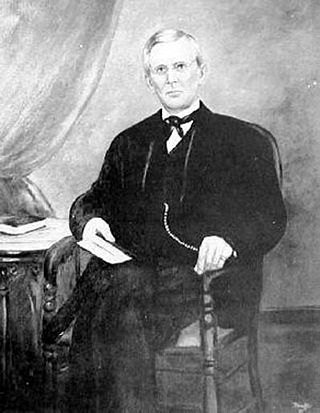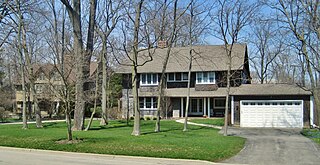Wildwood and Wild Wood may refer to:

Raleigh County is a county in the U.S. state of West Virginia. As of the 2020 census, the population was 74,591. Its county seat is Beckley. The county was founded in 1850 and is named for Sir Walter Raleigh. Raleigh County is included in the Beckley, West Virginia Metropolitan Statistical Area.

Beckley is a city in and the county seat of Raleigh County, West Virginia, United States. The population was 17,286 at the 2020 census, making it the ninth-largest city in the state. It is the principal city of the Beckley metropolitan area of Southern West Virginia, home to 115,079 residents in 2020. Beckley was founded on April 4, 1838, and was long known for its ties to the coal mining industry. It is the home of the West Virginia University Institute of Technology, as well as campuses of Concord University and the University of Charleston.

Bunker Hill is an unincorporated community in Berkeley County, West Virginia, United States, located in the lower Shenandoah Valley on Winchester Pike at its junction with County Route 26 south of Martinsburg. It is the site of the confluence of Torytown Run and Mill Creek, a tributary of Opequon Creek which flows into Winchester, Virginia. According to the 2000 census, the Bunker Hill community has a population of 5,319.

Watters Smith Memorial State Park is a 532-acre (2.15 km2) historical park and national historic district with a pioneer homestead and museum located in Harrison County, West Virginia. The homestead, rising above Duck Creek, is a memorial to settler Watters Smith, who was born in Trenton, New Jersey, in 1767, and moved to Harrison County in what was then Virginia, in 1796, with his wife Elizabeth Davisson Smith. A log cabin similar to the original was moved and reconstructed on the park, together with farm buildings typical of early 19th century settlement. The more modern Smith family home has been restored as a museum, and an additional museum houses many local farm artifacts from earlier eras. Guided tours are offered from Memorial Day weekend through Labor Day. In addition, the park features swimming, picnicking, hiking trails, and horseback riding.

The John Wood Mansion was built between 1835 and 1838 by John Wood, who in 1860 became the 12th governor of Illinois on the death of Governor William Bissell. The Wood family moved into the Greek Revival home situated at 12th and State Streets in Quincy, Illinois from an unusual two-story log cabin in 1837. Quincy is the county seat of Adams County. Wood founded both the county (1825) and city (1835).

The Arnold Homestead is a historic homestead in the city of Huber Heights, a suburb of Dayton, Ohio, United States. Formed at the turn of the nineteenth century, it centers on an 1830s farmhouse that was built for an immigrant family from Virginia.

The Baldwin-Grantham House, also known as Locust Grove and Shanghai House, was built in 1749 in Shanghai, West Virginia, in the Back Creek district of Berkeley County. The earliest portion of the house is a log cabin built in 1749 by Frances Baldwin. Frances and his wife Sarah lived there until 1790, when they sold the property to Joseph Grantham and Jacob Fry. William Grantham inherited the land from his father and circa 1820 built a brick kitchen addition onto the cabin, which now forms the middle part of the house.

The Thomas D. Campbell House is a historic Gothic Revival style log and wood frame home located in Grand Forks, North Dakota. It is significant for its association with Thomas D. Campbell, who became the largest wheat farmer in the United States. It is part of the Myra Museum and is listed on the National Register of Historic Places.

The Col. James Graham House is a historic log cabin located on West Virginia Route 3 in Lowell, West Virginia. It was built in 1770 as a home for Col. James Graham, the first settler of Lowell, and his family. It was later the site of an Indian attack on the Graham family in 1777. The house was added to the National Register of Historic Places on March 16, 1976. The Graham House is the oldest multi-story log cabin in West Virginia. It is currently operating as a museum.

Mirador is a historic home located near Greenwood, Albemarle County, Virginia. It was built in 1842 for James M. Bowen (1793–1880), and is a two-story, brick structure on a raised basement in the Federal style. It has a deck-on-hip roof capped by a Chinese Chippendale railing. The front facade features a portico with paired Tuscan order columns. The house was renovated in the 1920s by noted New York architect William Adams Delano (1874–1960), who transformed the house into a Georgian Revival mansion.
Rohrbaugh Cabin — also known as Allegheny Cabin — is a historic log cabin located on the eastern slope of North Fork Mountain near Petersburg, Grant County, West Virginia, USA.

This is a list of the National Register of Historic Places listings in Raleigh County, West Virginia.

Henry Cooper House, also known as The Daughters of American Pioneers Museum and Cooper Cabin, is a historic home located at Parkersburg, Wood County, West Virginia. The log cabin was erected in Slate District, Wood County, in 1804, by Henry Cooper, and is believed to be the first two-story log cabin in Wood County. In August 1910, the City of Parkersburg purchased the structure for $400. After being dismantled, the house was rebuilt in the Park in September 1910. In 1911, title was granted by the City Council to the Centennial Chapter - Daughters of American Pioneers. The cabin is open as a museum.

Alfred Beckley was the founder of Beckley, West Virginia, and a brigadier general in the Virginia militia during the American Civil War. He named the city of Beckley in honor of his father, John James Beckley, who was the first librarian of the United States Congress.

The Hazel Avenue/Prospect Avenue Historic District is a historic area of Highland Park, Illinois, United States. It was home to some of Highland Park's most notable residents, including telephone inventor Elisha Gray.

The Saxon Lutheran Memorial in Frohna, Missouri, commemorates the German Lutheran migration of 1838–1839, and features a number of log cabins and artifacts from that era. The memorial opened in 1962 and was placed on the National Register of Historic Places in 1980.
The Beckley Mill Site is a historic archaeological site off Worley Road near Piney Creek in Beckley, West Virginia. The site is that of a mill established in 1835 by Beckley's founder and namesake, Alfred Beckley. The mill remained in use into the early 20th century, but was eventually closed and abandoned. Its site was sheltered from vandalism by isolation caused by railroad tracks and a local landfill, but it has now been turned into a small public park.

The Morgan Morgan Monument, also known as Morgan Park, is a 1.05-acre (0.4 ha) roadside park in the unincorporated town of Bunker Hill in Berkeley County, West Virginia. It is located along Winchester Avenue and Mill Creek. The park features a granite monument that was erected in 1924 to memorialize Morgan Morgan (1688–1766), an American pioneer of Welsh descent, who was among the earliest European persons to settle permanently within the present-day boundaries of West Virginia.

The Elias Comstock Cabin is a single-family home located at the corner of Curwood Castle Drive and John Street in Owosso, Michigan. It was listed on the National Register of Historic Places in 1980. It is the oldest residence still extant in the City of Owosso.



















